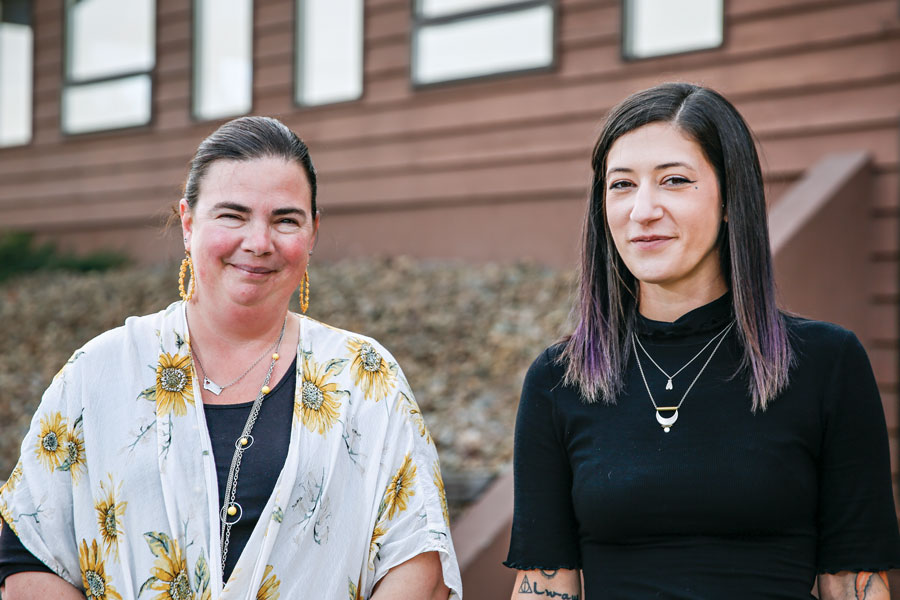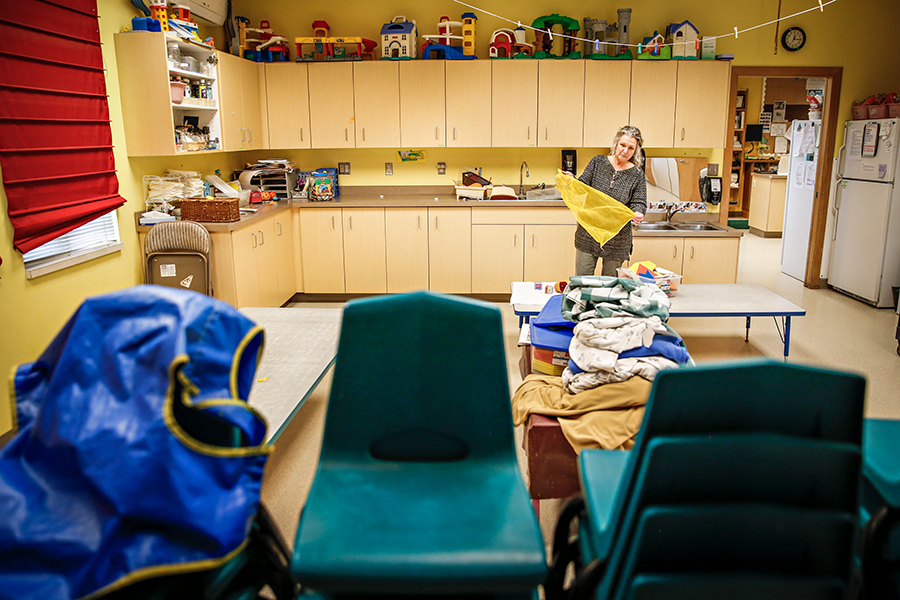Childcare Advocates: Pandemic Illuminates Need for Public Funding, Expanded Access
Bullock distributed $50 million in emergency relief funds to industry; study says Montana economy loses $232 million per year due to inadequate childcare
By Myers Reece
Montana is one of only a handful states in the U.S. without state-funded preschool, while its public funding for daycare is highly limited. Moreover, a 2019 state report outlined a significant shortage in licensed childcare availability across Montana, including early-education “deserts” in rural areas.
A new study released Oct. 1 concluded the Montana economy loses $232 million annually due to insufficient childcare access, including parents of young children losing $145 million in wages and government receiving $32 million less in income tax receipts.
The report also says businesses lose $55 million each year due to inadequate childcare because of “lower employee productivity, such as missing work or declining to pursue further job training or education, as well as higher turnover rates and related employee-recruitment costs.” It also shrinks the pool of available qualified workers.
The University of Montana Bureau of Business and Economic Research and Montana Department of Labor and Industry surveyed households and businesses, while the Federal Reserve Bank of Minneapolis sponsored the report.
Now a pandemic is thrown into that mix, in which many families either choose or are forced to keep their school-aged children home due to health concerns, closures and quarantines, in addition to the same scenarios playing out at daycares for younger kids.
For those reasons, childcare advocates like Rachel Just, outreach and communication specialist at the Nurturing Center in Kalispell, were relieved when Gov. Steve Bullock announced in August that he was directing $50 million of the state’s coronavirus relief fund, derived from federal COVID-19 money, to support childcare.
The Nurturing Center is one of seven Childcare Resource and Referral Agencies (CCR&R) in Montana responsible for distributing $10 million of that funding to families “with special circumstances in need of in-home care.” The center’s geographical area includes Flathead, Lake, Sanders and Lincoln counties.
“It’s a unique struggle in Montana, especially in Lincoln County and Sanders County, where they don’t even have enough daycare for younger kids,” Just said. “Now we’re going to add the problem of school-age kids out of school, and they have to find an alternative. Up until this point, school did most of your childcare needs. It was free, it was public, and now you don’t have access to it anymore.”
Advocates at the Nurturing Center and elsewhere in Montana saw the funding as a sign that lawmakers and government officials may be recognizing the need for public support for childcare and early education, which has long been discussed within the industry but has been laid bare by the pandemic.
Childcare facilities rely on tuition, as well as fundraising at nonprofit centers, to operate in an industry with high overhead expenses due to required child-per-teacher ratios, insurance, rent or mortgage, food, classroom supplies and other costs. Most providers in Montana don’t have a steady revenue source beyond tuition, so COVID-caused closures or declining enrollments rapidly eat away at the bottom line while also putting families in a bind.

Whether the emergency dollars lead to a broader, more permanent rethinking of public funding in Montana for childcare, as well as preschool, won’t be known until the Legislature convenes. But advocates are cautiously hopeful, particularly as the pandemic has clarified the critical economic importance of childcare: working parents can’t go to work without it.
“I think that’s what we’re really hopeful for now, that this is the beginning, that this is the proof that legislators are starting to take notice of this crisis,” Just said. “COVID has really magnified and illuminated problems that were already there.”
The Nurturing Center has been taking applications for its share of the $10 million and divvying it out to families representing a wide range of circumstances: a grandmother in Libby caring for four kids; a Trout Creek family whose three kids are remote learning due to one daughter’s medical complications; a Kalispell mother who pulled her kids out of school to protect her daughter with an autoimmune disease.
Each family receives $4,000 to be spent as needed, including families whose children with special needs require paid respite care, or others who have to hire a tutor or babysitter. The Nurturing Center has enough funds for about 400 families, and as of Oct. 1, more than 200 had been approved.
Bullock’s office says the funds are “intended to help offset additional costs families may face due to unique child care needs.”
Bullock also directed $30 million in grants to maintain and expand childcare for school-age kids who are out of school. Eligible programs include for-profit businesses, nonprofit and community organizations, school districts providing childcare and licensed childcare providers.
Bullock’s office said the funding can be used to “address health and safety needs related to COVID-19, tuition, transportation, training, and other expenses to maintain and expand care for school-age children during out of school time.”
The rest of the $50 million included $8 million in supplemental payments to all licensed and registered childcare facilities, as well as $2 million to CCR&R agencies for administration and outreach.
Public preschool was a pillar of Bullock’s final-term agenda, but a pilot program that passed in 2017 wasn’t renewed, nor did it lead to a permanent program. Even those discussions, however, didn’t account for ages 0 to 3, which Nurturing Center Family Engagement Coordinator Mary Buenz calls the most “vulnerable population.”
“That’s not even talked about,” she said. “We’re missing the boat. They’re really the most important ages.”
Early-childhood advocates hope to build off the pandemic relief to start a more expansive conversation about public childcare funding in Montana, which will inherently need to include a wide array of stakeholders.
“There are so many options,” Buenz said. “It’s about encouraging legislators to think about funding for early education, but it’s also about bringing companies together, corporations. It has to be everybody at the table, community members, the agencies, the parents.”
For more information, contact the Nurturing Center at (406) 756-1414 or www.nurturingcenter.org.